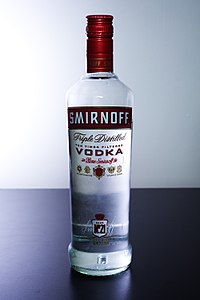**History and Origins**:
– The etymology of the word ‘vodka’ traces back to Slavic languages, meaning ‘little water.’
– Early vodka production in Russia, Poland, and Sweden dates back centuries.
– Vodka’s origins are debated, with its popularity rising in the 14th and 15th centuries in Eastern Europe.
– Industrialization in the 19th century led to the mass production of vodka.
– Distillation techniques date back to Roman Egypt in the 3rd century, evolving over time in Europe.
**Production and Distillation**:
– Vodka can be distilled from various plant matters rich in starch or sugar.
– Distillation and filtration processes are crucial to remove off-flavors and impurities.
– Traditional vodka-producing nations prioritize accurate distillation techniques.
– Different ingredients like rye, wheat, potatoes, molasses, soybeans, grapes, or rice can be used in vodka production.
– Discussions on standardization of vodka production are ongoing in the European Union.
**Cultural Significance and Consumption**:
– Vodka plays a significant role in Russian and Eastern European cultures, with traditional customs and celebrations involving its consumption.
– Vodka is a key ingredient in various culinary recipes and cocktails.
– Excessive vodka consumption has been linked to health and social issues.
– Vodka’s cultural impact extends beyond consumption to economic and political realms.
– Vodka is globally consumed, with diverse preferences in flavors and its versatility making it popular in mixology.
**Regulations and Standards**:
– Countries like Canada and the U.S. have strict regulations on vodka production, defining standards of identity for the spirit.
– Legal frameworks outline specific distillation and proof requirements for vodka.
– Vodka’s definition evolved to allow slight flavors while maintaining neutrality.
– Concerns over issues like gay rights have led to boycotts of Russian vodka brands.
– The impact of boycotting Russian vodka brands varies across regions.
**Manufacturers and Brands**:
– Various vodka manufacturers exist worldwide, with notable distilleries in Poland, Russia, and Sweden.
– Sweden’s Systembolaget stores feature a variety of vodka brands, including Absolut Vodka.
– Everclear, a high-proof alcohol, is used in making premium vodkas.
– The market offers a wide range of vodka brands catering to diverse tastes and preferences.
– Notable Polish and Russian distilleries have a long history of vodka production, contributing to the spirit’s global popularity.
Vodka (Polish: wódka [ˈvutka]; Russian: водка [ˈvotkə]; Swedish: vodka [vɔdkɑː]) is a clear distilled alcoholic beverage. Different varieties originated in Poland, Russia, and Sweden. Vodka is composed mainly of water and ethanol but sometimes with traces of impurities and flavourings. Traditionally, it is made by distilling liquid from fermented cereal grains and potatoes since the latter was introduced in Europe in the 18th century. Some modern brands use corn, sugar cane, fruits, honey, and maple sap as the base.
 Smirnoff Red Label vodka | |
| Type | Distilled alcoholic beverage |
|---|---|
| Country of origin | Poland, Russia, Sweden |
| Region of origin | Central, Northern and Eastern Europe |
| Alcohol by volume | 35–40% |
| Proof (US) | 70–80° |
| Color | clear |
| Ingredients | Water, grains |
| Related products | Flavored vodka, nalewka |
Since the 1890s, standard vodkas have been 40% alcohol by volume (ABV) (80 U.S. proof). The European Union has established a minimum alcohol content of 37.5% for vodka. Vodka in the United States must have a minimum alcohol content of 40%.
Vodka is traditionally drunk "neat" (not mixed with water, ice, or other mixers), and it is often served freezer chilled in the vodka belt of Belarus, Estonia, Finland, Iceland, Latvia, Lithuania, Norway, Poland, Russia, Sweden, and Ukraine. It is also used in cocktails and mixed drinks, such as the vodka martini, Cosmopolitan, vodka tonic, screwdriver, greyhound, Black or White Russian, Moscow mule, Bloody Mary, and Caesar.
